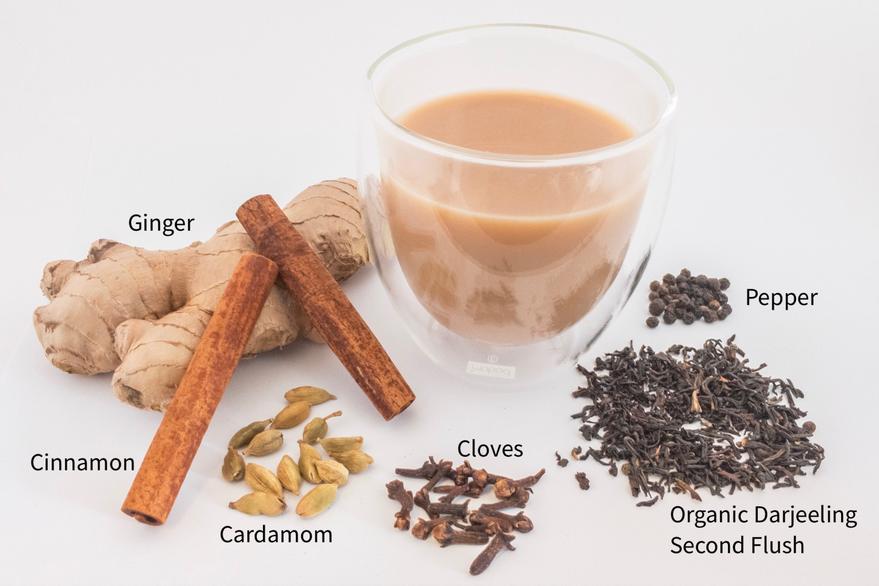Yogi Tea
Part of the Kundalini Yoga Center at Guru Ram Das Ashram Experience
Cardamon
During recovery from oral surgery I used Yogi Tea instead of painkillers. In LifeCycles and Lifestyles Karta Purkh Singh Khalsa explains, “Recent studies show that cardamom has pain-relieving, anti-inflammatory, and antispasmodic effects…According to Ayurveda it removes mucus from the stomach and lungs.” He also mentions its use in herbal medicine to treat stomach pain, involuntary urination, phlegm, indigestion and gas.
Due to a disastrous crop last year cardamom is even more expensive than usual. The knowledgable staffer at San Francisco Herb Company suggests that prices may go down when the new crop comes in.
Pepper
Black peppercorns put a kick in the taste of yogi tea. They deliver a powerful nutritional punch, too. Yogis look to peppercorn tea if they have hay fever, ear or sinus problems, coughs, asthma or any kind of respiratory issues. Herbalists use pepper as a blood purifier and an anti-aging agent.
These days some people are going to great lengths to boost their immune system by increasing their glutathione levels. The humble peppercorn in Yogi Tea prevents depletion of that molecule as well as other antioxidants.
Scientists studying pepper or its constituents speak of increased circulation and lowered blood pressure. They’ve found compounds in it that prevent osteoporosis. Rats given pepper were better able to release carcinogens through their livers. Piperine (in black pepper) seems to increase the bioavailability and absorption of nutrients.
Each cup of Yogi Tea, like each Kundalini Yoga kriya, keeps on working long after it is finished.
Cinnamon – Playing With Fire
Cinnamon is one of the most stimulating, heating spices there is—more so than cayenne in some respects. It promotes agni, the fire element, which maintains vitality. It helps sluggish digestion and the whole metabolism. It imparts highly absorbable calcium to Yogi Tea. (This is sometimes visible as a murky layer when it settles to the bottom of the Yogi Tea pot). Boiled cinnamon sticks are part of an ayurvedic remedy for bone loss. Many people have used it to prevent menstrual and other muscle cramps. In addition to the calcium, high levels of salicylic acid (the anti-inflammatory ingredient in aspirin) may contribute to that action. Its ability to help maintain healthy blood sugar levels has attracted scientific interest recently. Not the least of cinnamon’s gifts as it simmers in the Yogi Tea pot is a sweet and festive aroma.
Cloves for Love
Like the other pungent spices in Yogi Tea, cloves thin mucus and support the respiratory system. They balance the air element, which relates to the nervous system. They promote digestion and prevent gas. They enhance the circulation of blood and lymph. They can lower triglycerides and blood sugar. Cloves can help relieve muscle aches and the pain of rheumatism and arthritis.
The mildly warming property of cloves benefits elders and anyone in need of rejuvenation. The hot news is that they sustain sexual function. Cloves work in aphrodisiac and regeneration potions.
Caution: do not increase the proportion of cloves in the recipe or the taste will overpower the other ingredients. In the balanced recipe cloves will cause Yogi Tea to numb the taste buds just a bit. This makes it an ideal finish to a meal when it is time to stop eating.
Ginger
Ginger’s easy availability in the produce aisle belies its power to heal. Ayurveda regards ginger as a universal medicine and detoxifier. It helps warm cold hands and feet. It comforts cold and flu sufferers. It can relieve menstrual cramps, headaches and other pains. While making the mouth water it also fires up other digestive juices, so try it for any kind of nausea or stomach upset. It lowers blood sugar, & cholesterol, and soothes inflamed joints. Ginger is actually an optional ingredient in Yogi Tea but I never leave it out. Its pungent warming flavor supports the taste of all the other spices. Opinion is mixed on whether to peel the ginger before using in tea. (I rarely peel). The amount of ginger flavor you get depends on the amount of surface area you expose. In other words, the finer you slice, chop, grate or blend the ginger, the more kick you will taste.
Milk It
Guru Ram Das Ashram usually has Yogi Tea spices swimming in a big pot on the stove. After the spices are boiled for 20-60 minutes they sit overnight dispensing deep flavor and color. As students begin to arrive it is time to strain the spices out, add milk and boil. Boiling the milk in the tea is an integral part of the formula.
Some people avoid dairy milk because they fear it will cause too much mucus. According to herbalist Karta Purkh Singh Khalsa in The Way of Ayurvedic Herbs, “When cow’s milk is heated and taken warm, it breaks down the long chain proteins that are difficult to pass through the liver. Thus it seems not to cause the adverse congesting effects of cold unprocessed liquid milk.” The pungent spices balance the cooling properties of the milk.
The amount of milk is a matter of choice. The ratio served at the ashram is typically 1-2 cups milk to 6-7 cups of the spicy liquid. According to Yogi Bhajan even one drop of milk will enhance uptake of nutrients and protect the lining of the digestive tract. The milk promotes the assimilation of the spices and the warming spices aid in digestion of the milk. This holds for the milk of cows, goats, etc. Vegans can use any type of soy, nut or grain milk.
Yogi Tea as served at Guru Ram Das Ashram San Francisco
6 quarts water
7-8 inches fresh gingerroot
20-25 inches cinnamon sticks
2 tablespoons cardamom pods (one 1 tablespoon decorticated cardamom seeds)
1 tablespoon whole cloves
1 Heaping tablespoon black peppercorns
1 Teabag black tea
Bring water to a boil. Slice gingerroot. Add all ingredients except teabag and simmer one hour. For best results allow to cool several hours or overnight. Strain. Prepare desired amount. Add milk to taste. Bring to a boil, turn off heat and add teabag to steep. Sweeten if desired.

